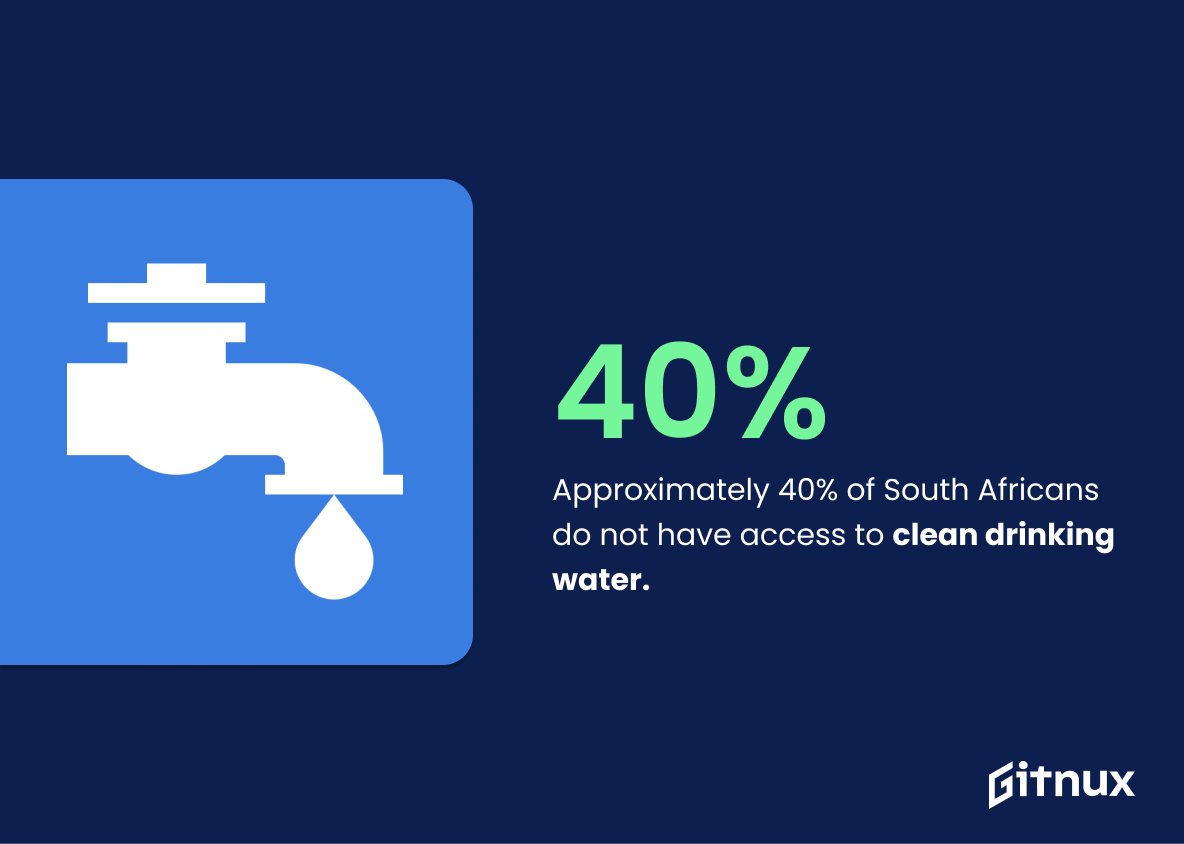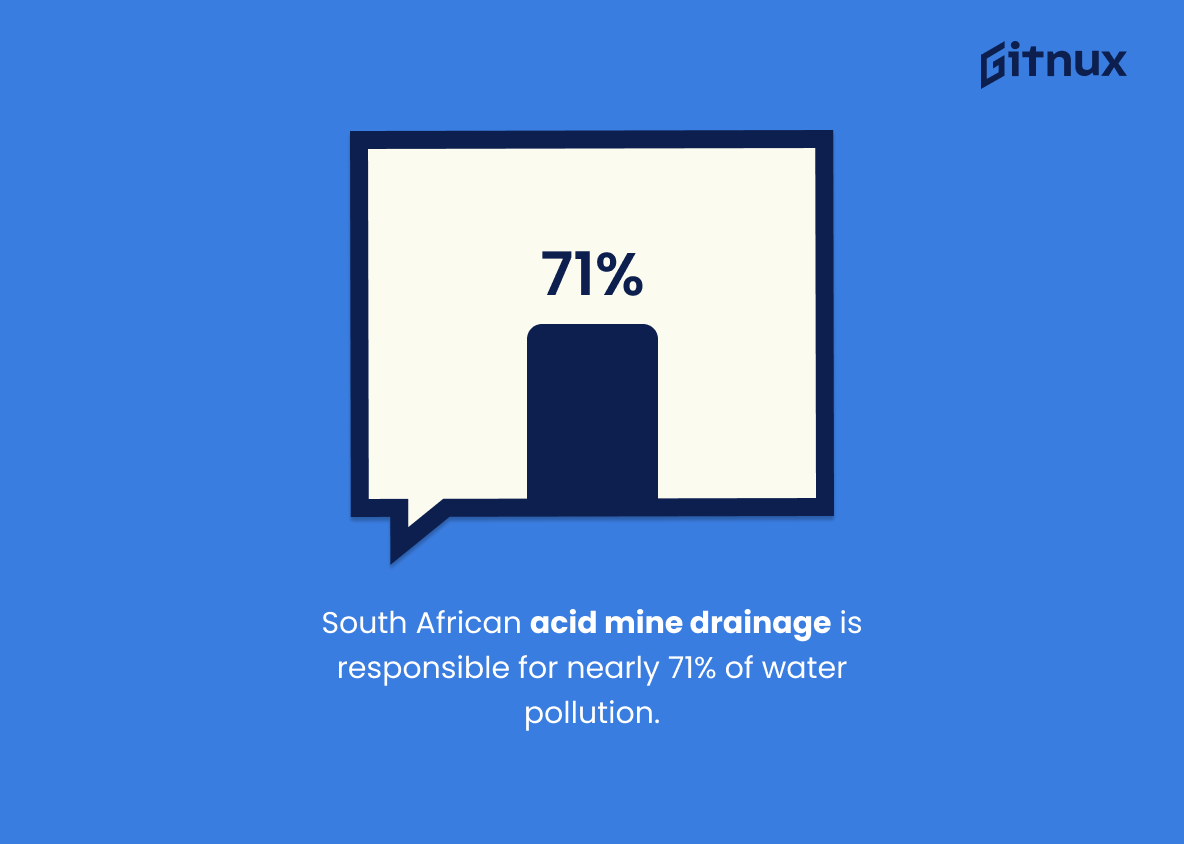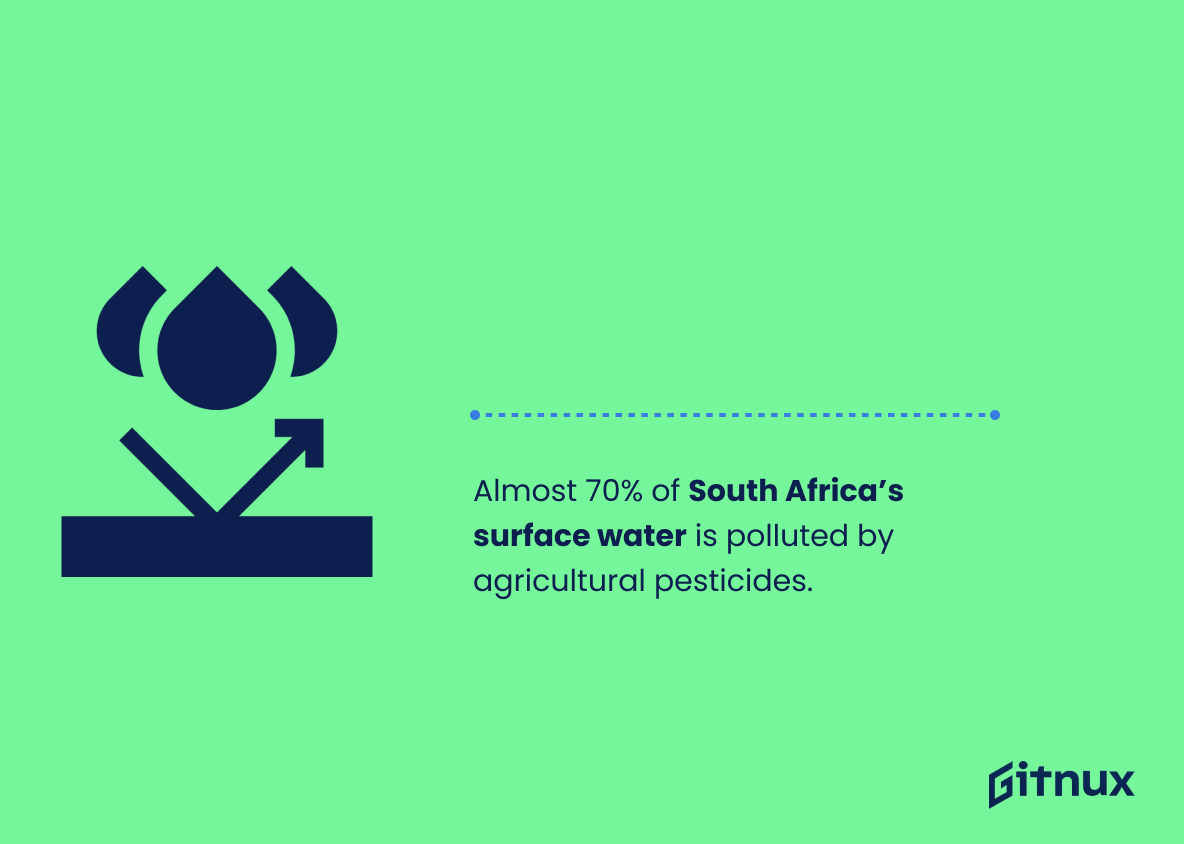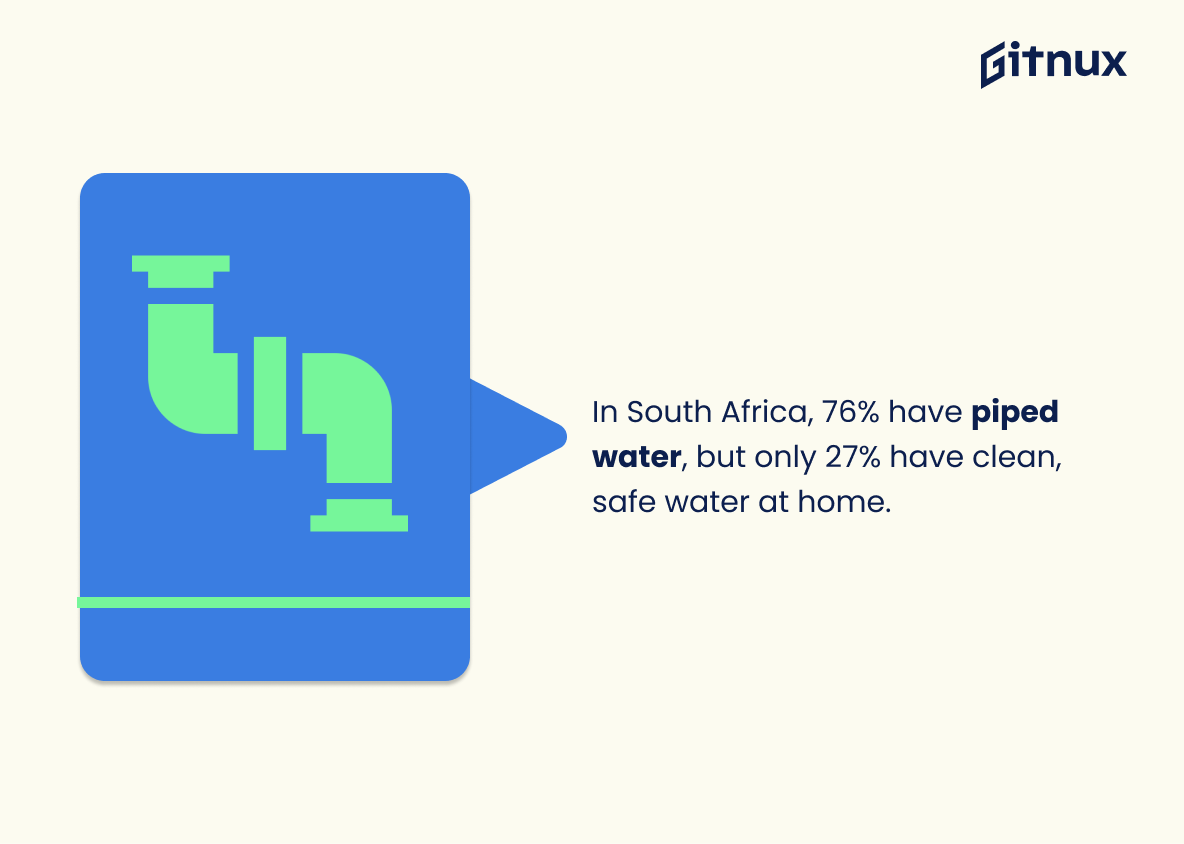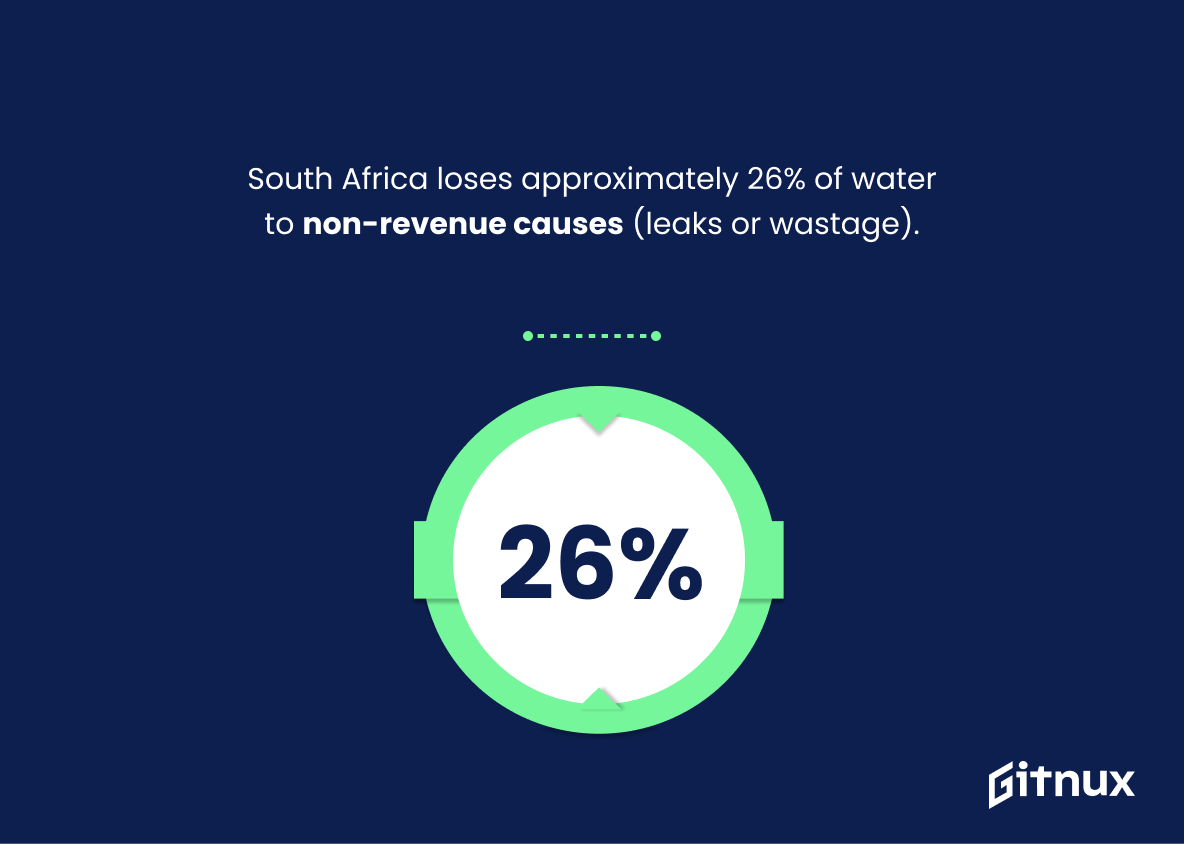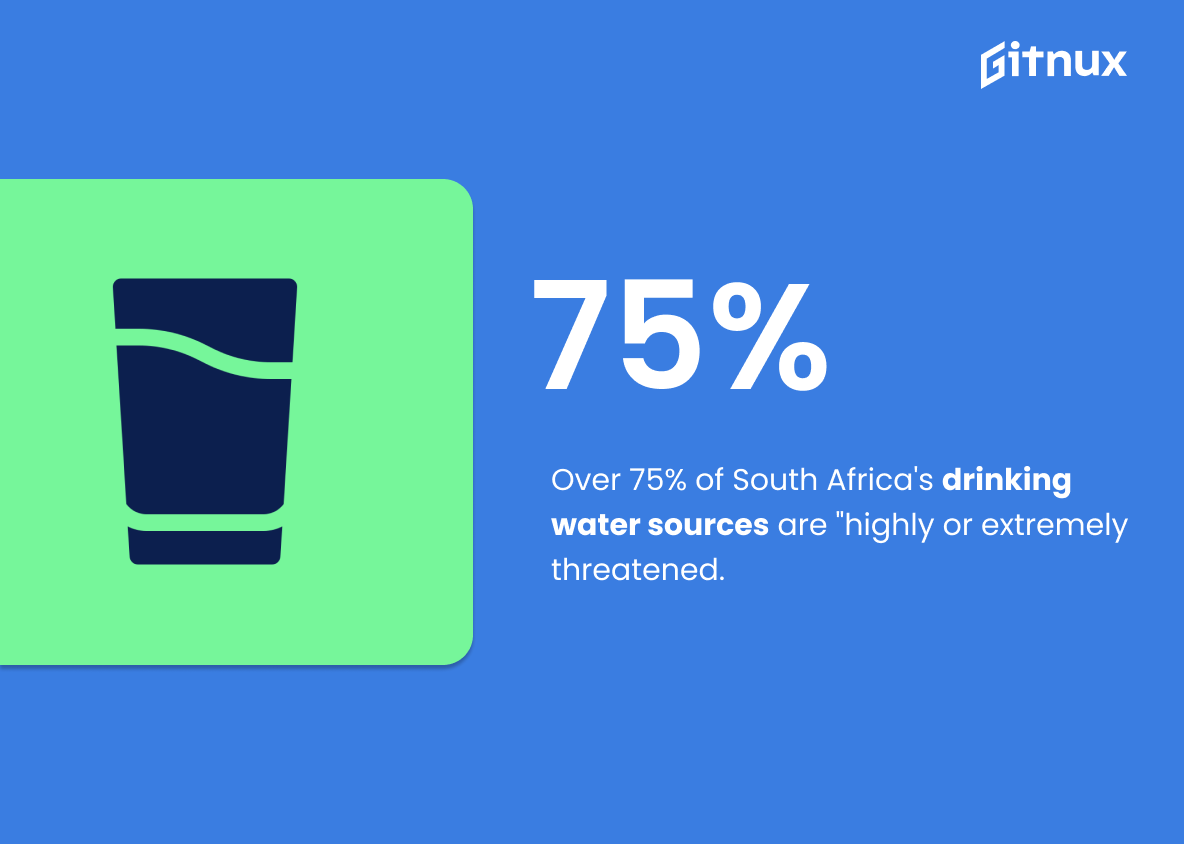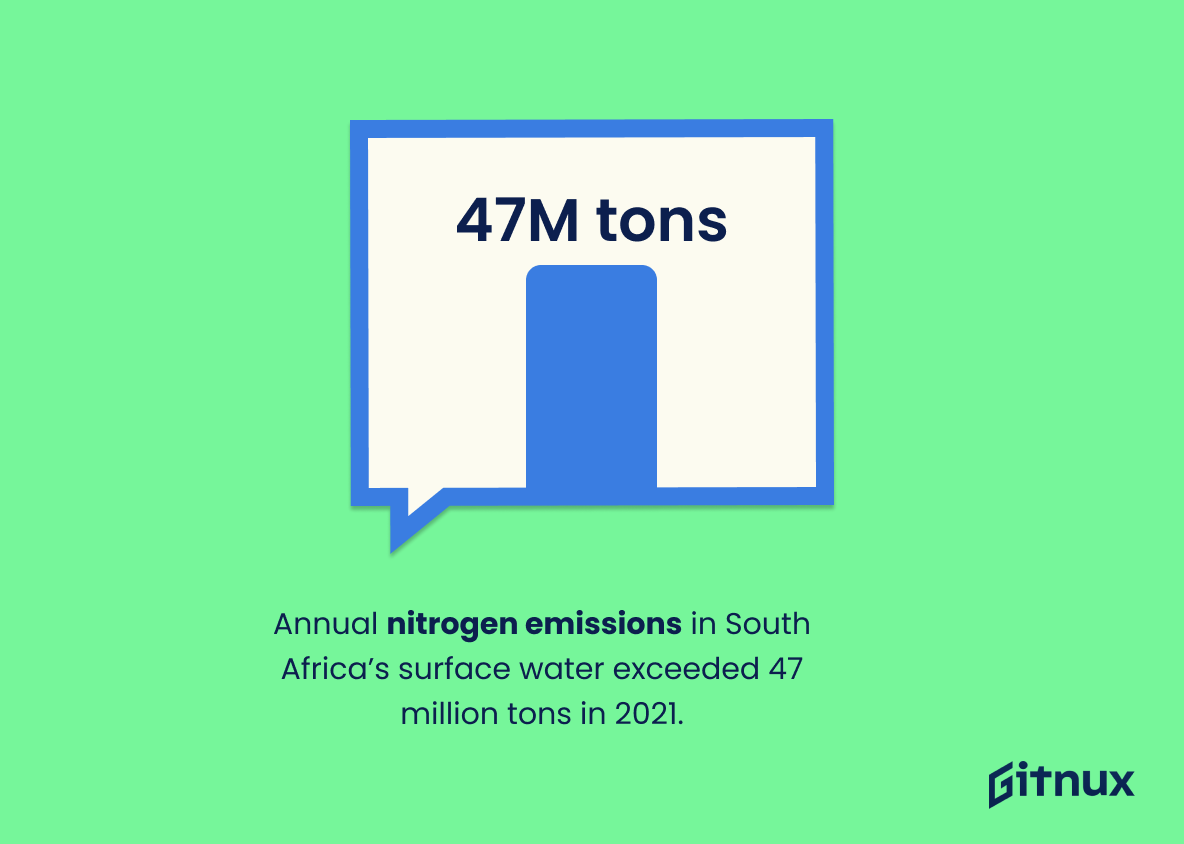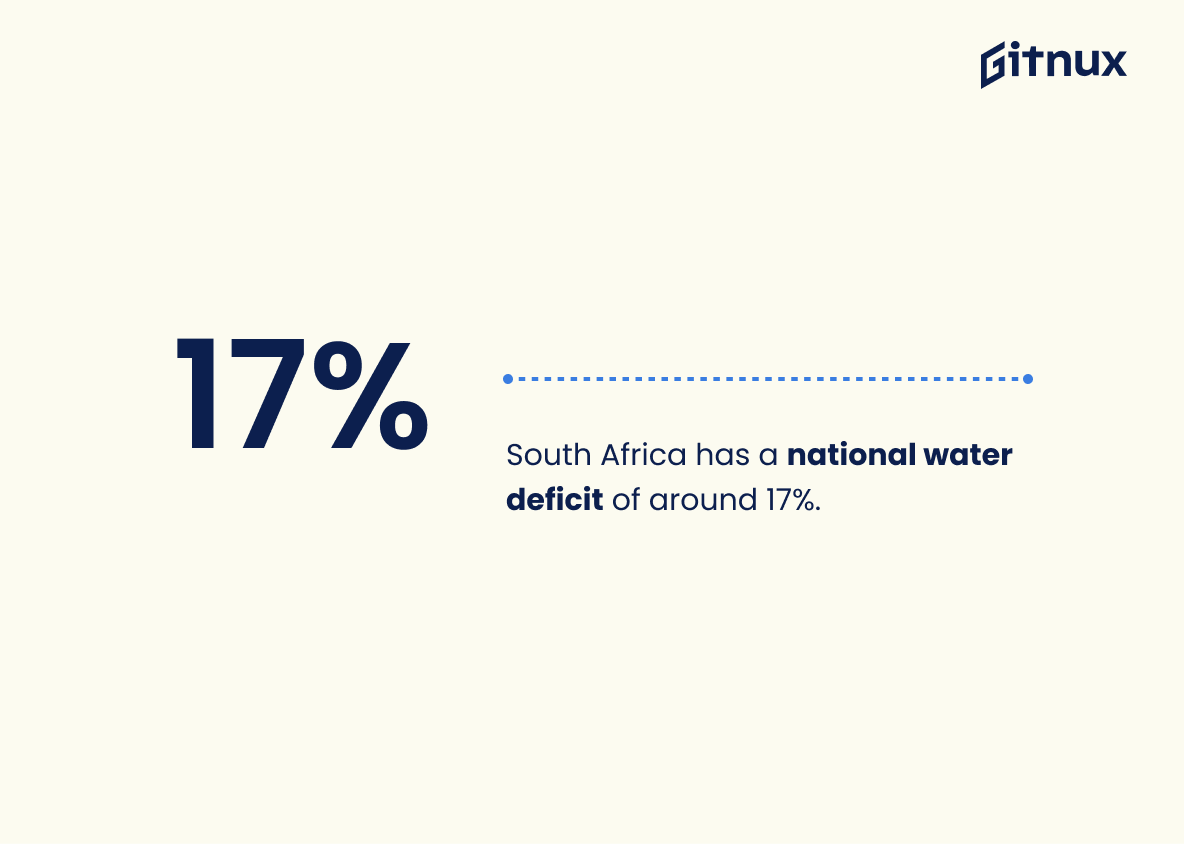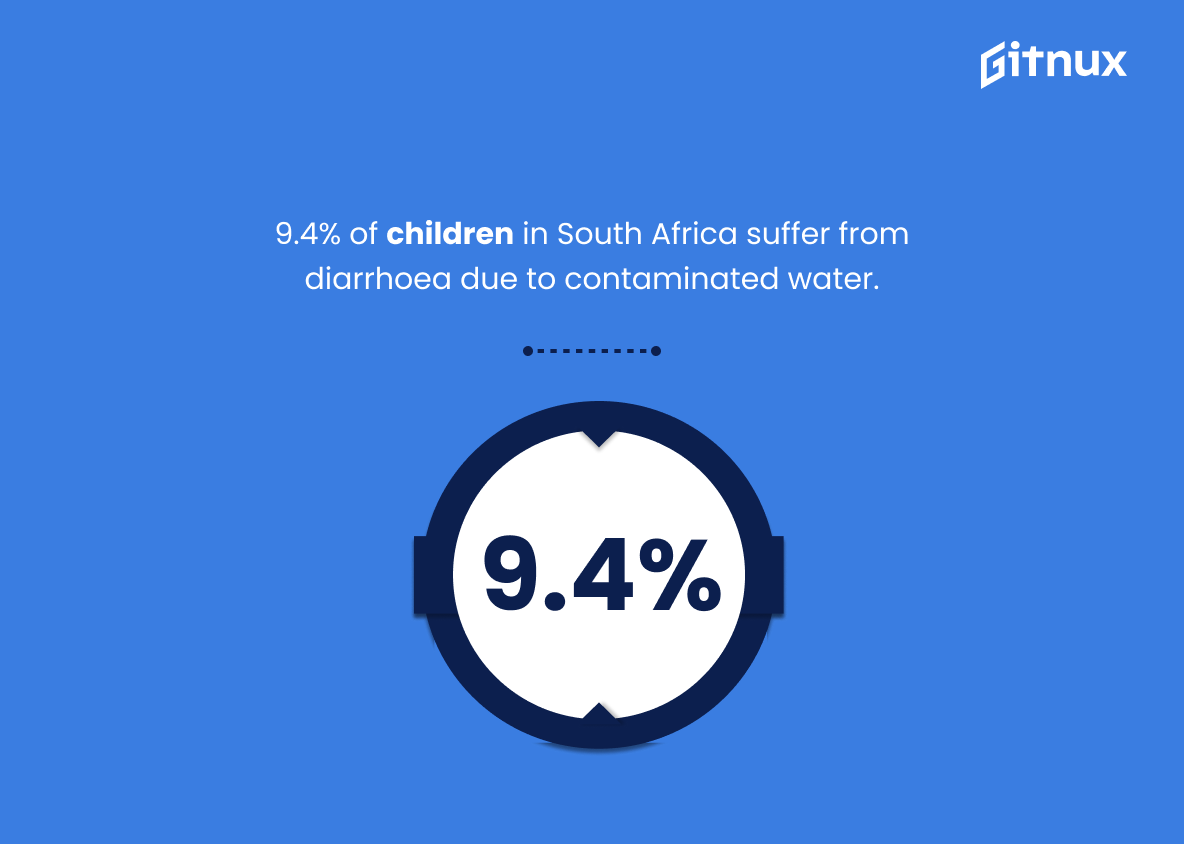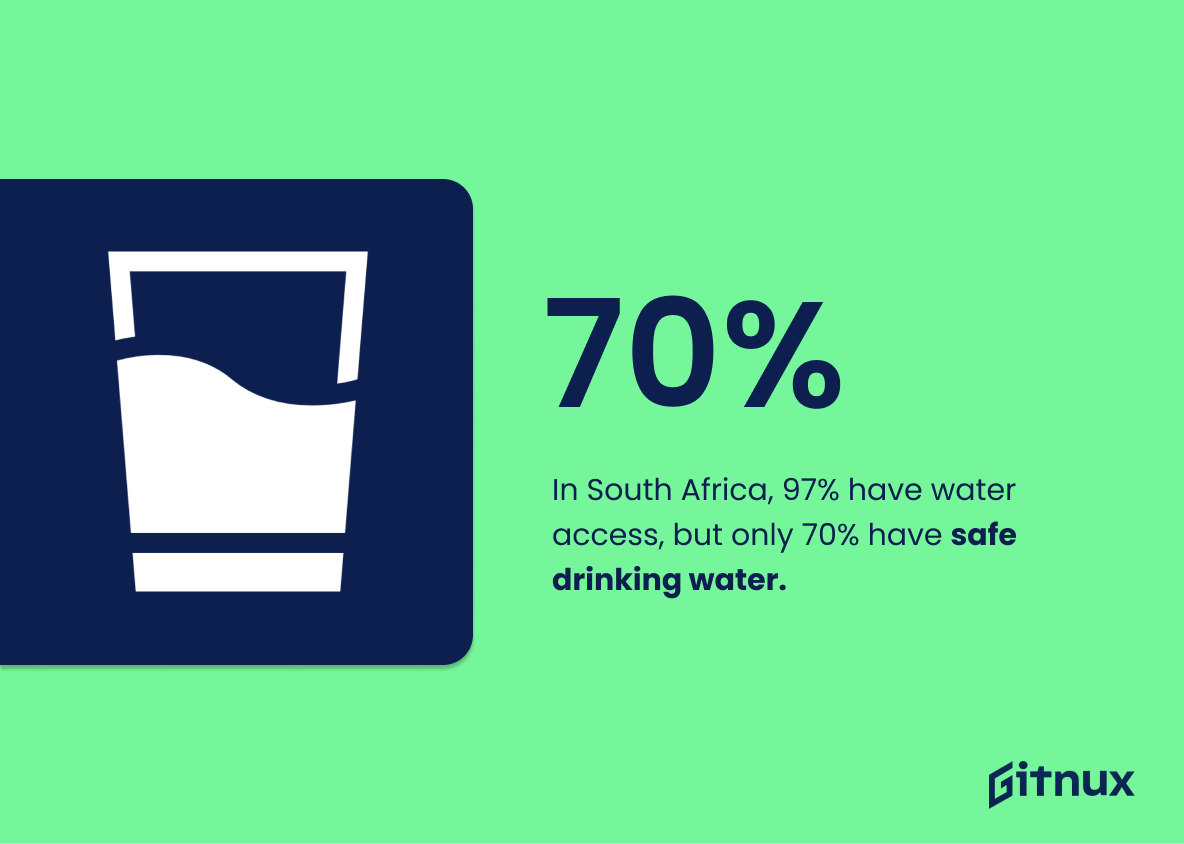South Africa is facing a water crisis that has been exacerbated by pollution. Water pollution in South Africa affects the quality of drinking water, causes environmental damage and costs billions of rand each year. This blog post will explore some statistics about water pollution in South Africa to gain an understanding of its severity and impact on the country’s economy, environment and people.
Approximately 37% of South Africa’s drinkable water is lost to leaks and wastage (Green Cape 2021). The country ranks 30th in the world for overall water quality according to Numbeo (2021), while over 4,000 sewage spills occur annually (The Conversation 2019). Furthermore, 56% of wastewater treatment plants are reported as being in a poor state (Science Direct 2021) with 40% of citizens not having access to clean drinking water (Cleanipedia 2020). It is estimated that this could cost the economy R 270 billion if left unchecked(Randwater 2018).
Acid mine drainage from mines accounts for nearly 71%of all sources contributing towards polluted rivers across South African regions(Wise Geek 2021), while E-coli bacteria pollutes more than 40 %of these same rivers(The Conversation 2020). Agricultural pesticides have also caused significant levels contamination with almost 70 %of surface waters affected due nonpoint source runoff from farms.(Springer Link 2020) In addition 76 percent households have access piped but only 27 percent enjoy safe potable at home Aqua4D2020 . Non revenue losses amount 26 per cent which translates into 7 2bn Rand yearly Gwri 2015 Thunga et al.. Finally nitrogen emissions exceed 47 million tons every year World Bank Special Focus Pollution Report 2017 . All combined it can be seen how serious issue really is affecting both health economic development nation wide.
Water Pollution In South Africa Statistics Overview
Approximately 40% of South Africans do not have access to clean drinking water.
This statistic is a stark reminder of the dire state of water access in South Africa. It highlights the fact that a large portion of the population is unable to access clean drinking water, a basic human right. This statistic is a powerful indicator of the need for greater efforts to be taken to reduce water pollution and improve access to clean water in South Africa.
South African acid mine drainage is responsible for nearly 71% of water pollution.
This statistic is a stark reminder of the severity of water pollution in South Africa. It highlights the fact that South African acid mine drainage is a major contributor to the water pollution crisis in the country, and that urgent action needs to be taken to address this issue.
Almost 70% of South Africa’s surface water is polluted by agricultural pesticides.
This statistic is a stark reminder of the severity of water pollution in South Africa. It highlights the fact that the majority of the country’s surface water is contaminated by agricultural pesticides, which can have a devastating effect on the environment and human health. This statistic is a call to action for South Africans to take steps to reduce water pollution and protect their water resources.
In South Africa, 76% of households have access to piped water, but only 27% enjoy clean, safe water in their homes.
This statistic serves as a stark reminder of the severity of water pollution in South Africa. Despite the majority of households having access to piped water, only a fraction of them are able to enjoy clean, safe water in their homes. This highlights the need for greater efforts to be taken in order to reduce water pollution and ensure that all South Africans have access to clean, safe water.
South Africa experiences an estimated 26% loss due to non-revenue water (water lost through leaks or wastage).
This statistic is a stark reminder of the magnitude of water wastage in South Africa, highlighting the need for urgent action to address the issue of water pollution. It is a sobering reminder of the amount of water that is being lost due to leaks and wastage, and the impact this has on the environment and the country’s resources.
More than 75% of the drinking water sources in South Africa are considered “highly or extremely threatened.”
This statistic is a stark reminder of the severity of water pollution in South Africa. It highlights the fact that the majority of the country’s drinking water sources are in a precarious state, and that urgent action is needed to protect them. It serves as a call to action for all South Africans to take steps to reduce water pollution and protect their water sources.
Annual nitrogen emissions in South Africa’s surface water exceeded 47 million tons in 2021.
This statistic is a stark reminder of the severity of water pollution in South Africa. It highlights the fact that nitrogen emissions in South Africa’s surface water have reached an alarming level, indicating that the country is facing a serious environmental issue. This statistic is a call to action for South Africans to take steps to reduce nitrogen emissions and protect their water sources.
South Africa has a national water deficit of around 17%.
This statistic is a stark reminder of the dire state of South Africa’s water resources. It highlights the urgent need to address water pollution in the country, as a water deficit of 17% means that the country is already facing a shortage of clean, safe water. This is a major concern, as water pollution can further exacerbate the water crisis, leading to even more severe water shortages.
In 2017, only 15% of South Africa’s wastewater treatment systems operated meeting effluent standards.
This statistic is a stark reminder of the severity of water pollution in South Africa. It highlights the fact that the majority of wastewater treatment systems in the country are not meeting the necessary effluent standards, indicating that the water is being contaminated with pollutants and hazardous substances. This is a major cause for concern, as it can have a detrimental effect on the environment, human health, and the economy.
9.4% of children in South Africa suffer from diarrhoea due to contaminated water.
This statistic serves as a stark reminder of the devastating effects of water pollution in South Africa. It highlights the fact that contaminated water is having a direct and detrimental impact on the health of children in the country, and that urgent action is needed to address this issue.
97% of South African households have access to water, but only 70% of them have access to safe drinking water.
This statistic is a stark reminder of the reality of water pollution in South Africa. It highlights the fact that while access to water is widespread, access to safe drinking water is not. This means that many South Africans are exposed to water that is contaminated with pollutants, which can have serious health implications. This statistic is a powerful reminder of the need to address water pollution in South Africa and to ensure that all South Africans have access to safe drinking water.
Conclusion
The statistics presented in this blog post demonstrate the severity of water pollution in South Africa. Approximately 37% of drinkable water is lost to leaks and wastage, while 56% of wastewater treatment plants are in a poor state. Over 40% of South Africans do not have access to clean drinking water, and 71% of all water pollution comes from acid mine drainage. The annual cost for these issues ranges between R396 million and R6.4 billion, with an estimated 26% loss due to non-revenue water each year costing around R7.2 billion annually alone. It is clear that urgent action needs to be taken by both government officials and citizens alike if we want our country’s precious resources protected for future generations
References
0. – https://www.dw.com
1. – https://www.environment.co.za
2. – https://www.niwa.co.nz
3. – https://www.wisegeek.com
4. – https://www.greenpeace.org
5. – https://www.numbeo.com
6. – https://www.gwri.gatech.edu
7. – https://www.aqua4d.com
8. – https://www.cleanipedia.com
9. – https://www.greencape.co.za
10. – https://www.ncbi.nlm.nih.gov
11. – https://www.link.springer.com
12. – https://www.worldbank.org
